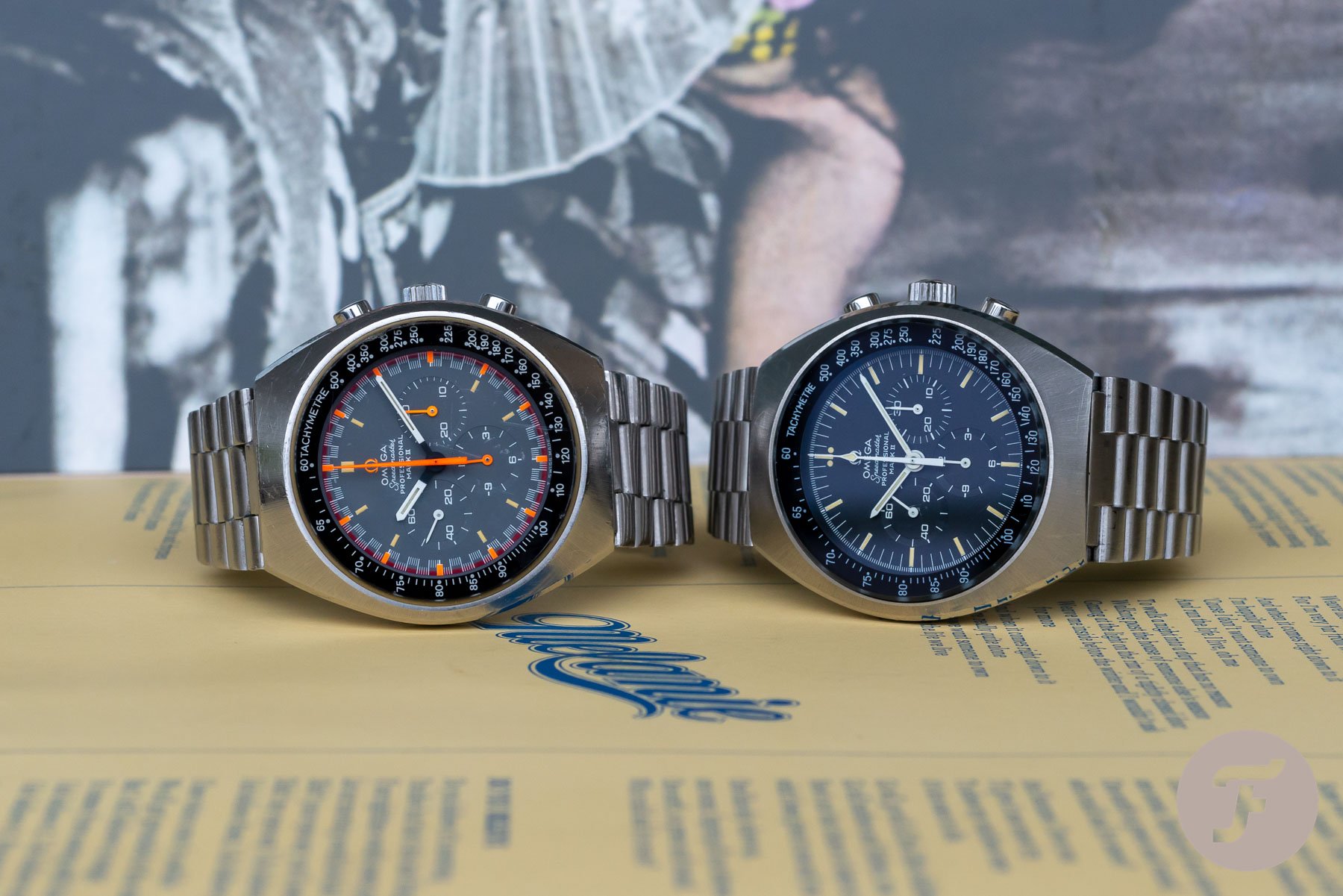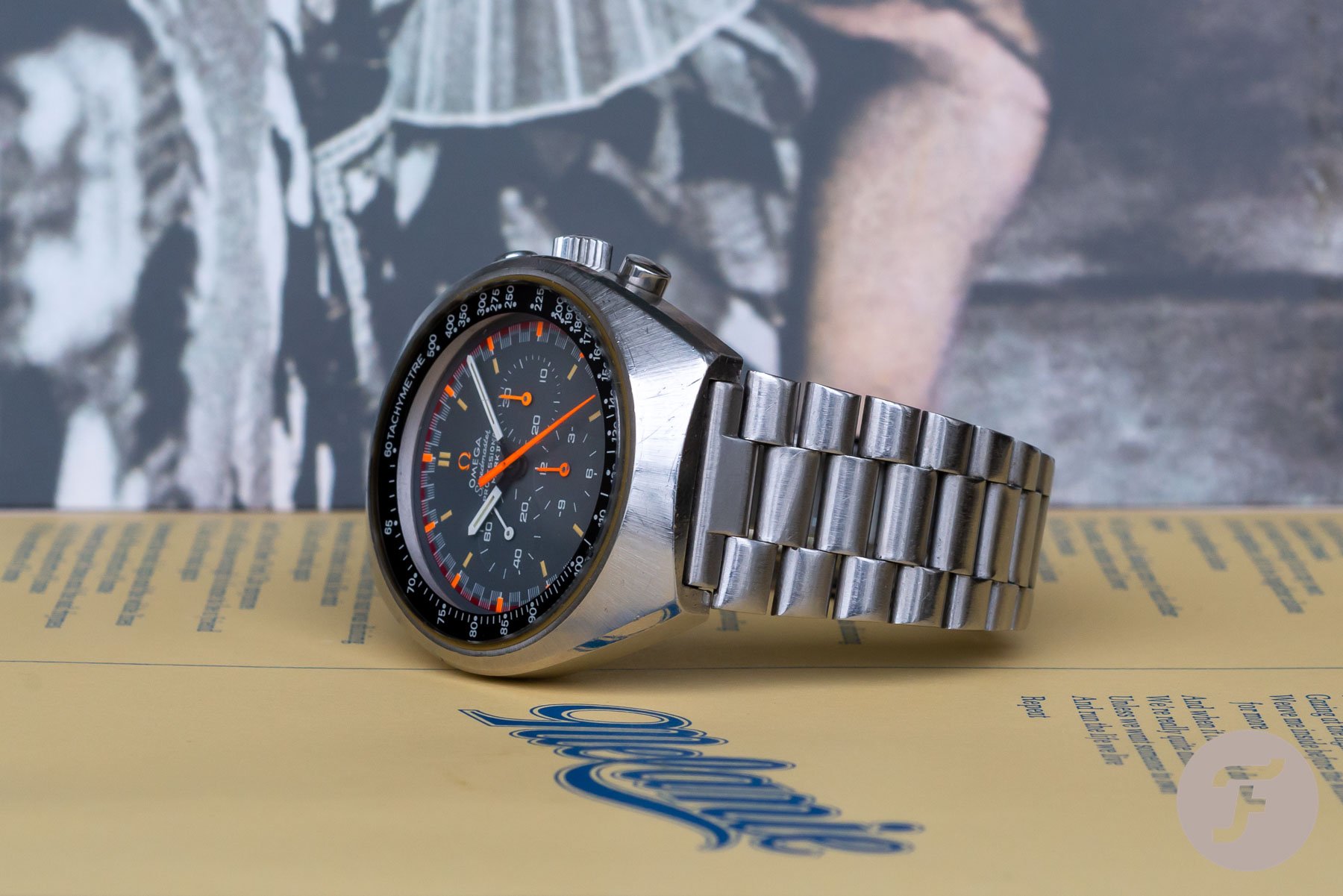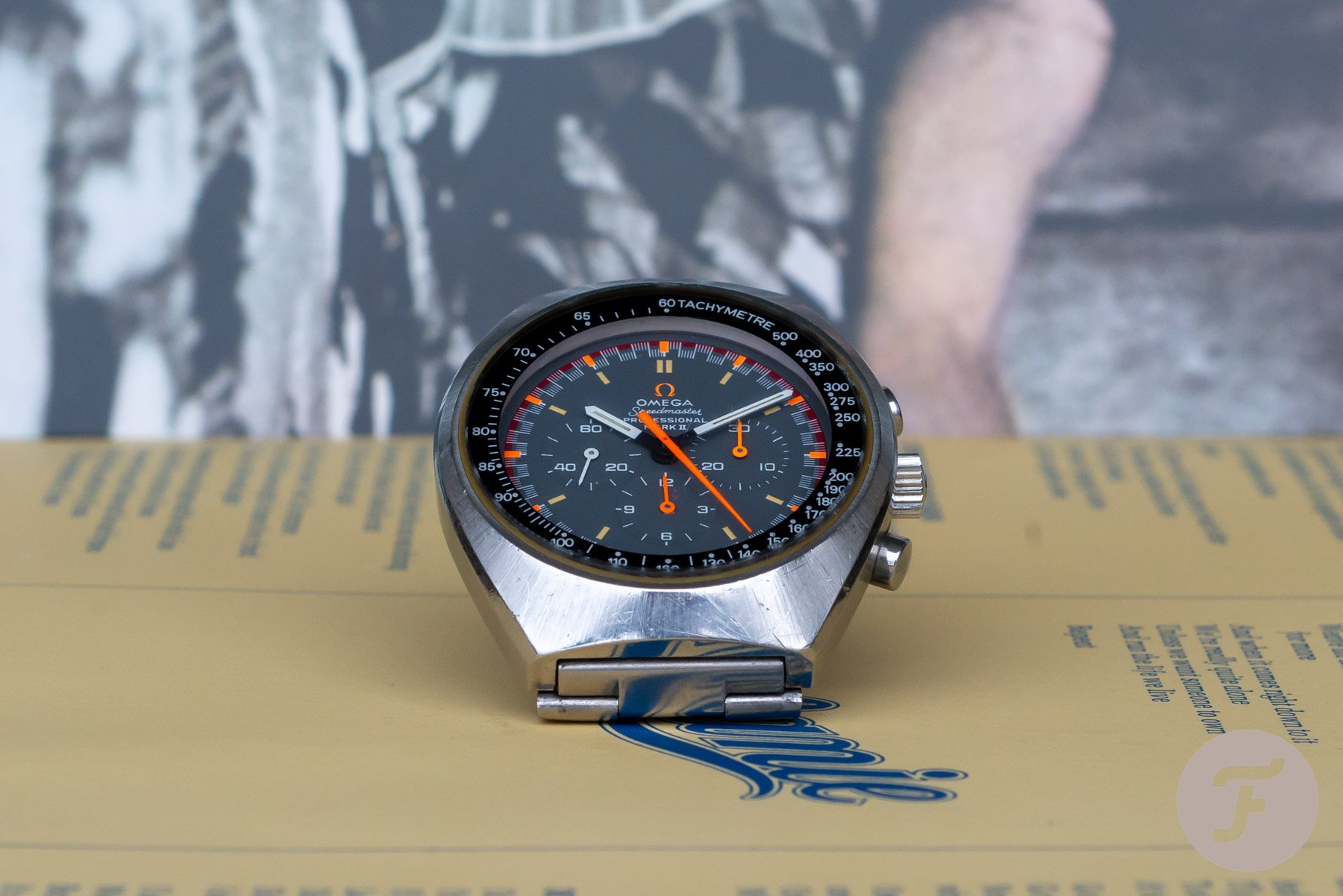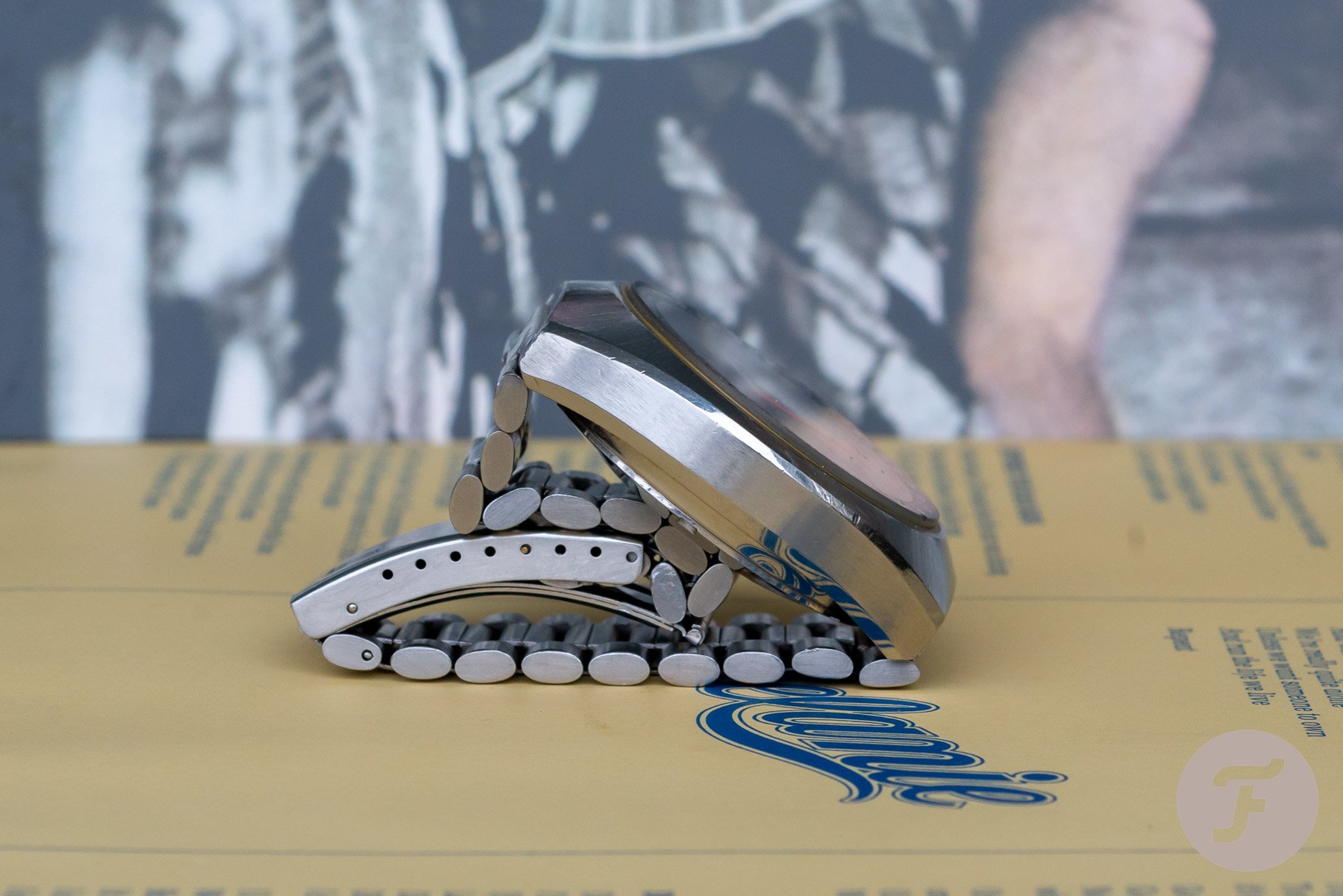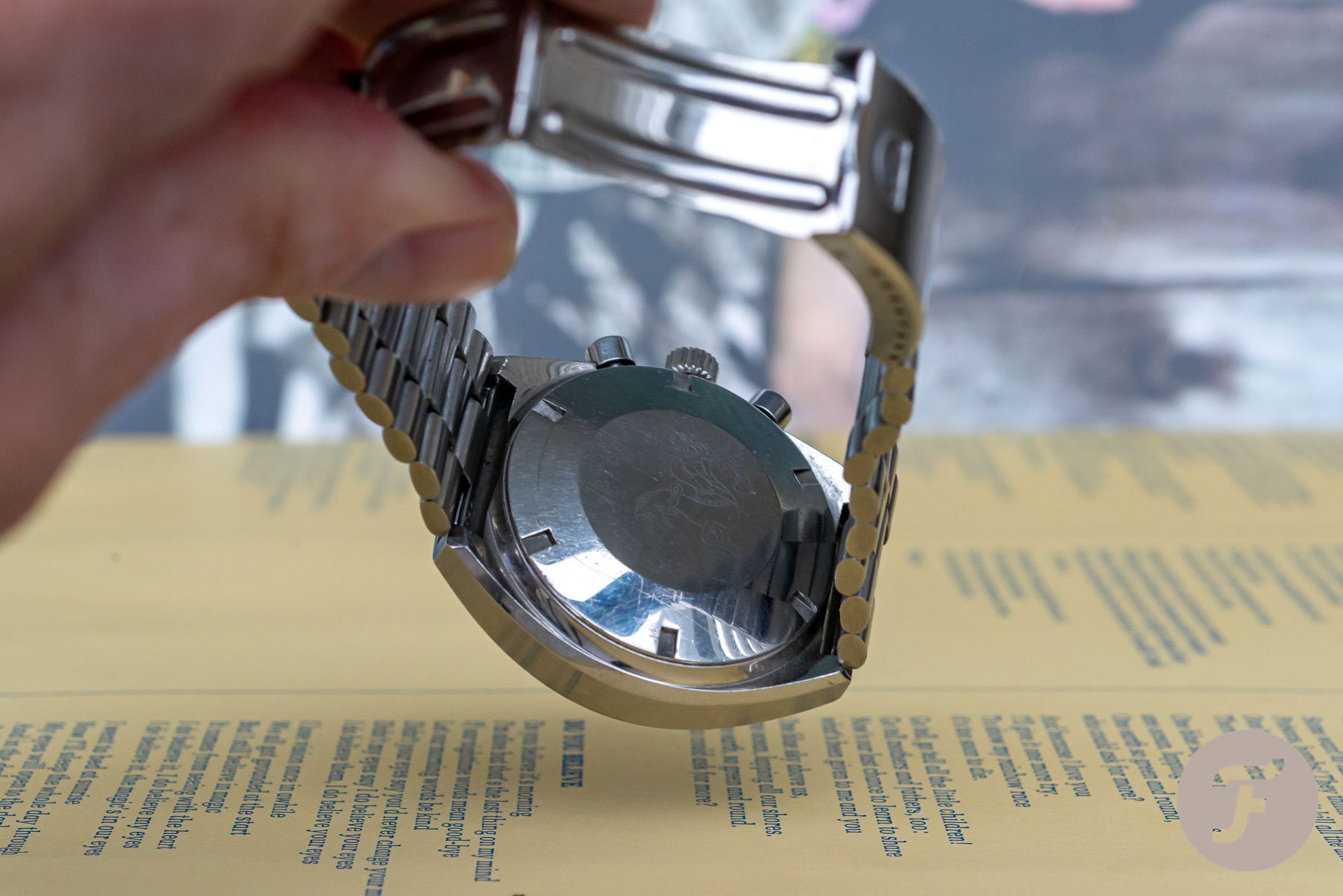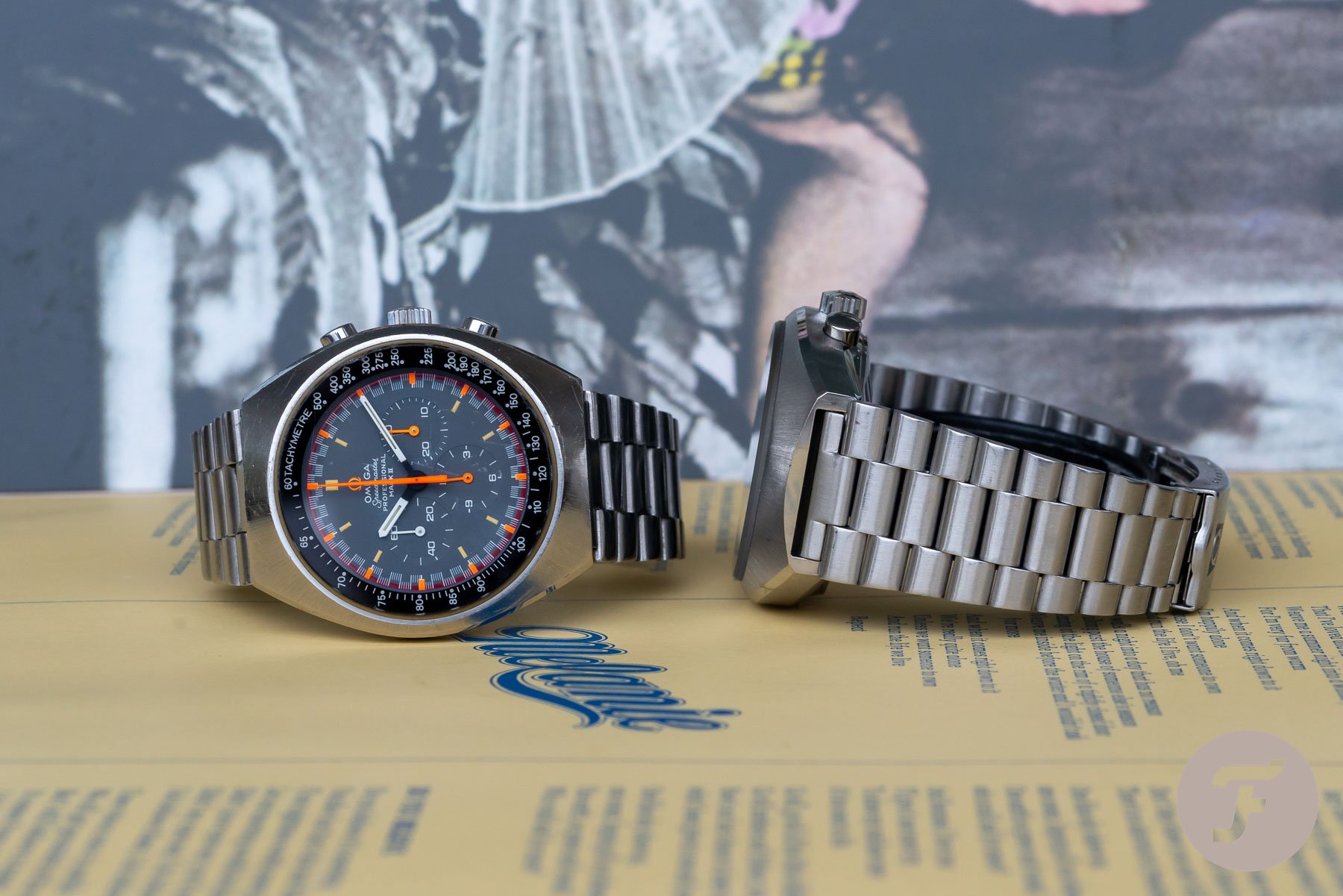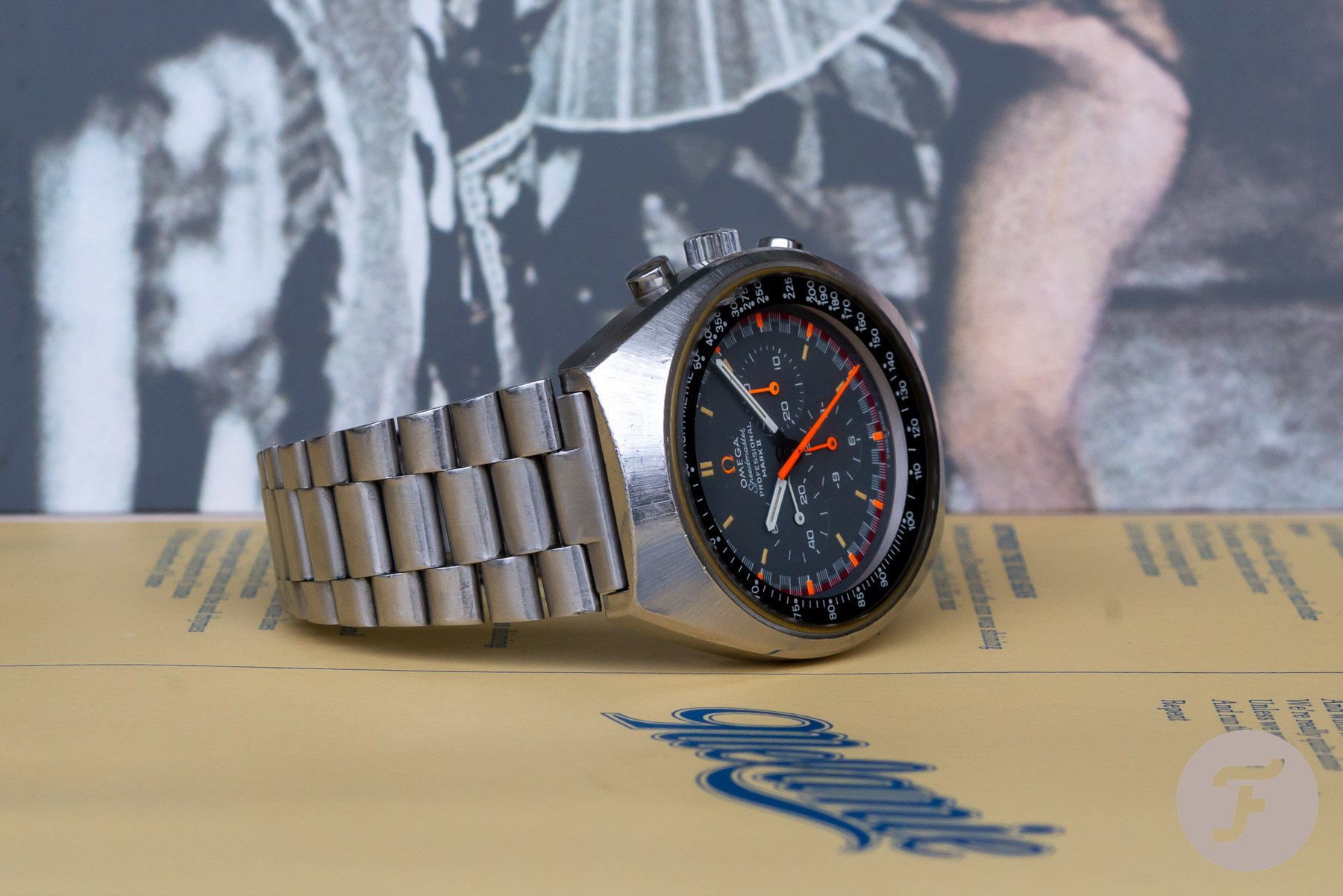Speedy Tuesday – The Omega Speedmaster Mark II Racing 145.014
The Moonwatch is undoubtedly the most popular Speedmaster model and always has been. But there are variations that we consider to be very interesting as well, and worth collecting. The Speedmaster Mark II 145.014 is such a reference, for example.
For a long time, I neglected the Speedmaster Mark II, officially a Speedmaster Professional Mark II, as well. Mainly because of the case shape, which didn’t appeal to me. Not in the last place because I thought it would be uncomfortable on the wrist. I regret to this day that I didn’t buy one in the early days of being a Speedmaster collector, as these watches could be picked up dead cheap. A few hundred Euro would get you a nice looking Speedmaster Mark II. I tI added a Mark II to my modest collection somewhere in 2014, and not for the right reasons at first. I could purchase one for around 1000 Euro, which needed some work (an additional €300), but I thought the price would make it a worthwhile purchase. Especially with the modern Mark II Automatic being introduced that year. However, after purchasing it and having my Speedmaster Mark II 145.014 restored, I discovered that I actually liked it on the wrist. I wrote an in-depth article on my Speedmaster Mark II 145.014 here. Although that article is about five years old, it still describes the 145.014 very accurately.
Speedmaster Mark II Racing Dial
The Speedmaster Mark II 145.014 for this article is slightly different, as it is the version with the racing dial. This particular watch dates back to 1970 and has a colorful dial with the orange chronograph hands. Besides the hands and the racing dial, it is exactly the same watch as a regular Omega Speedmaster Mark II 145.014. In fact, the dial is very close to the racing dials of the last Speedmaster Professional with reference 145.022-69, except for the writing of ‘Mark II’ on the dial, of course. In 2004, these dials were the inspiration for the Speedmaster Professional Japan Racing model reference 3570.40. It is needless to say that the original Moonwatch references with a racing dial, including the 2004 Japan Special, are highly sought-after and fetch impressive prices on auctions and sales. Compared to those prices, the Mark II with a racing dial is a steal.
You will also find the hands to be slightly different from the 2004 Japan racing dial. The 145.022-69 Moonwatch with a racing dial also had the same hands as this 145.014, though. The cases of the Mark II series are all the same, a 41.7 x 15 mm tonneau-shaped case. When you’re looking for a Speedmaster Mark II, please note that the 145.014 reference is the same for the standard dial version and the racing dial version. So you have to go through pictures or try to search with some extra keywords to find one with a racing dial.
Prices of these watches have gone up a bit in the last few years, where you could find one below 2000 Euro in 2015 and 2016, today you’re looking at a price between 2000 and 3000 Euro, depending on the condition. There are exceptions that might cost less, and those that will cost you more, but it all has to do with the (working) condition and whether it comes with box and papers (which these hardly do).
Pilots and Projects
What was the story again with the case of the Mark II and the Alaska Project models? And the Pilot Line of Omega? Omega was experimenting with pilot’s watches and case designs for these watches, the best example is the Flightmaster model that Omega has produced. The Mark II has been in line with that development of case shapes. More interesting to me is the connection with the Alaska Project. We did a thorough write-up on Omega’s Alaska Project here, if you’re not familiar with it. The Alaska Prototype had a case that reminded of a UFO and was made of (polished) titanium. This watch was a bit too expensive for NASA and based on the feedback of NASA engineer James H. Ragan, Omega decided to go back to the drawing table and started using the case of the Mark II. That case was already in production at the time, and Ragan expressed his appreciation for this design. Omega created a few of these watches and shipped them to NASA. At least one of them ended up in an auction from Phillips (here) about a year ago and fetched a whopping CHF193,750,- Swiss Francs.
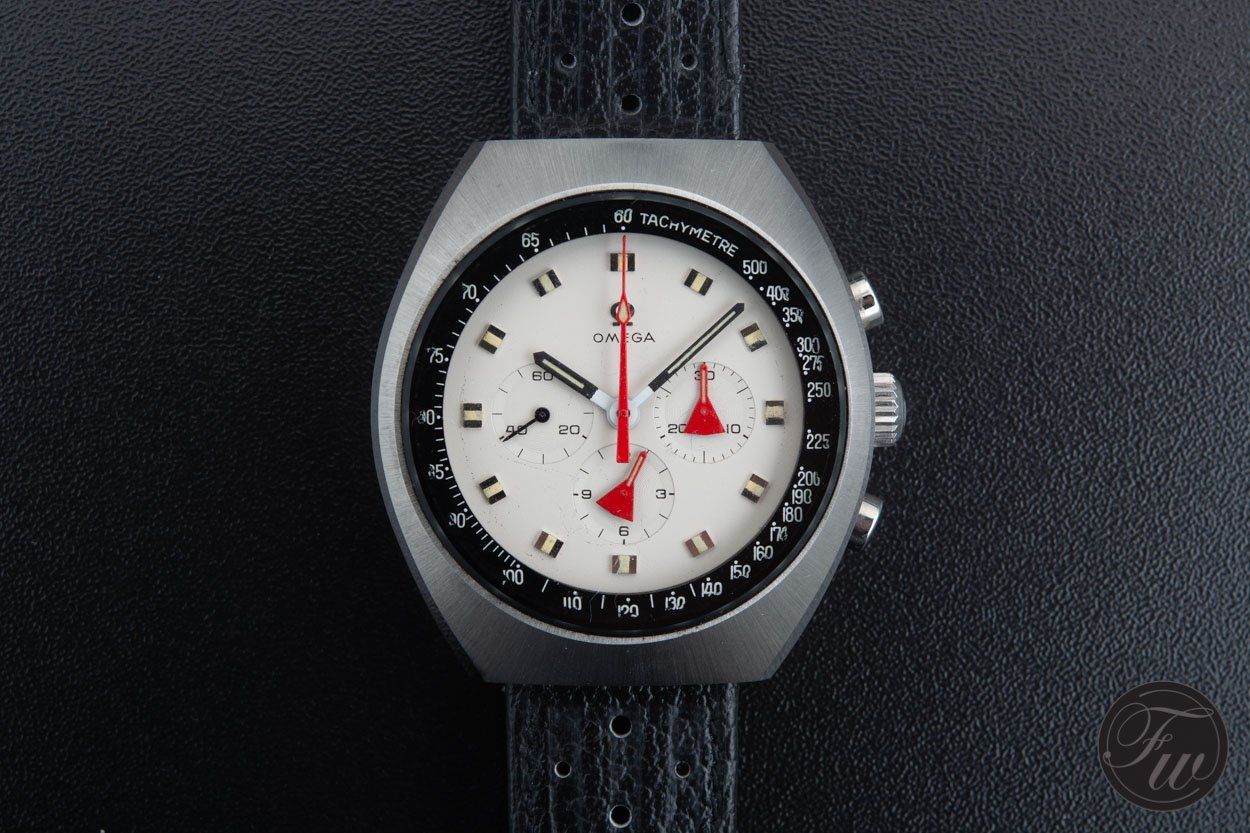
This has nothing to do with the Speedmaster Mark II 145.014 Racing we have in this article, but I thought it would be nice to share and remind you of this association.
Some Thoughts
Powered by the same caliber 861 movement as the regular Speedmaster Professional ‘Moonwatch’ and made at the same time and corresponding quality controls as the Speedmaster 145.022 reference, these 1969-1975 Mark II models are still a bargain. The standard Speedmaster Mark II 145.014 with black dial starts below €2000, and if you fancy a grey racing dial with some bright colors, you need to shell out a bit more. But nothing compared to the thousands premium for a Moonwatch with a racing dial, including the later 2004 version. Even for today’s standards, you buy something pretty amazing for two grand. You just need to realize that vintage watches come with a certain risk and that repair and restoration can add a significant amount to the purchase price. For Speedmaster collectors, you definitely need a Mark II in your collection, or a Mark IV (same case, different movement, and dial). These are watches that wear very comfortably and a bit smaller than the regular Speedmaster Professional Moonwatch. You can put them on a leather strap to change the appearance a bit, but I prefer them on the original stainless steel bracelet.
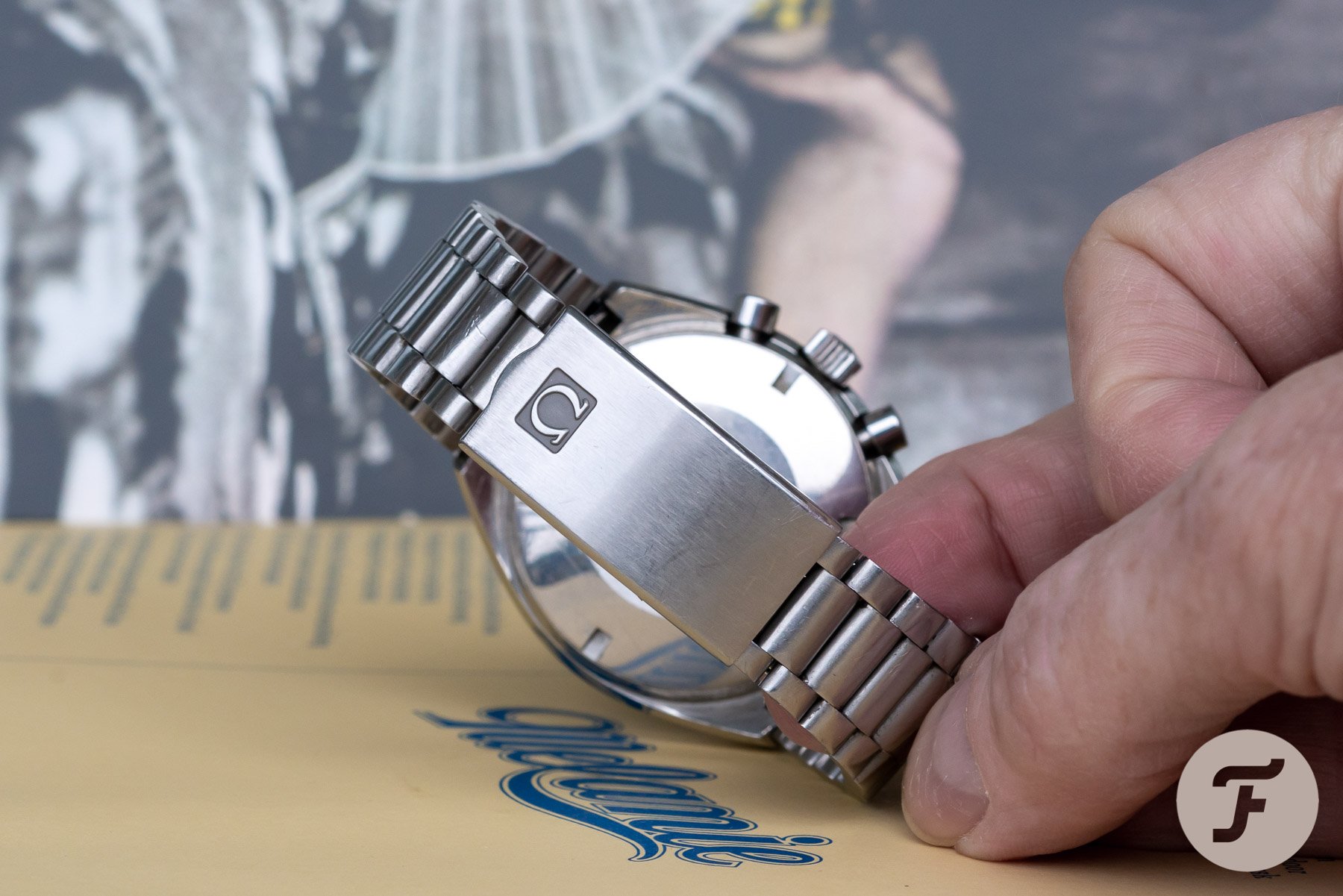 This Speedmaster Mark II in this article is on the reference 1162 bracelet, a variation on the famous 1171 bracelet from the Moonwatch. You will also come across Mark II watches on a different bracelet, with two polished links left and right of the center link. This is a bracelet with reference 1159 and is perfectly original, as well.
This Speedmaster Mark II in this article is on the reference 1162 bracelet, a variation on the famous 1171 bracelet from the Moonwatch. You will also come across Mark II watches on a different bracelet, with two polished links left and right of the center link. This is a bracelet with reference 1159 and is perfectly original, as well.
If you search these watches on eBay or Chrono24, for example, you will notice that some of them have had a hard life. The easiest way to tell is by the number of dents, scratches, and of course, the disappeared brushed finishing on the case. Some of them have been restored or polished the wrong way, ending up with a high polished case. A watchmaker can restore this with a lapping machine (or by Omega’s special vintage service), but it does remove a bit from the original case and thus the risk of losing its original shape a bit. Always be careful with this. The watch pictured in this article also had a good life you could say, but the original finish is still visible.
More information on the Speedmaster Mark II 145.014 can be found here. All other Speedy Tuesday articles that we’ve published can be found here.

